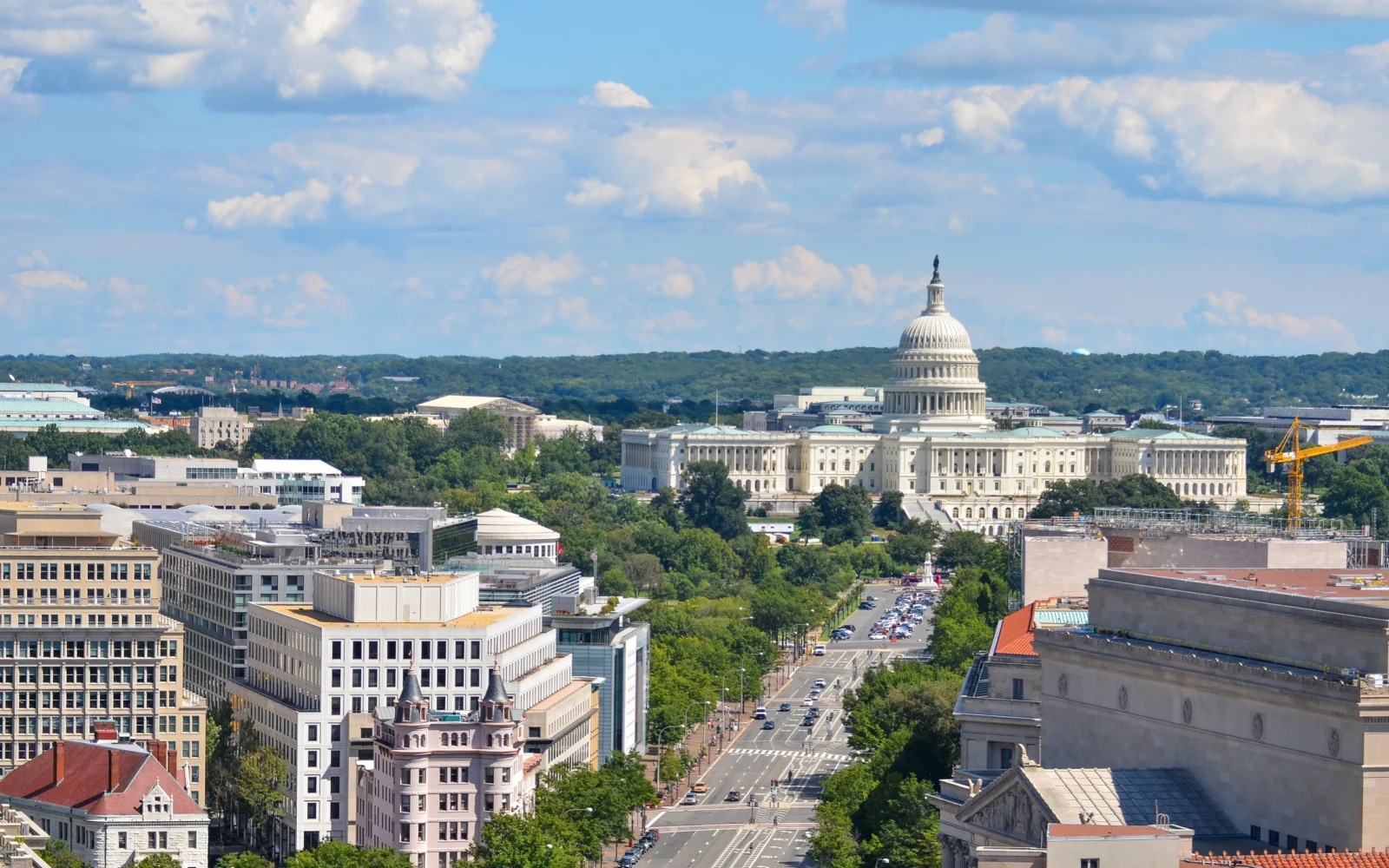Is Washington, DC safe to visit?
Washington, DC is generally safe for tourists, with most crime concentrated in specific neighborhoods rarely visited by tourists. While the city does have a higher crime rate, incidents affecting tourists are rare, and the primary concern is pickpocketing, especially on the Metro and in crowded tourist areas.
Armed robberies, while more common in residential neighborhoods, are unlikely to occur in well-frequented tourist areas, making D.C. a safe destination for visitors.
Washington, D.C., the capital of the United States, receives over 20 million visitors each year. Americans wanting to see the nation’s capital and foreigners looking to explore a seat of global power all flock to the city.
There is so much to see and do in Washington, D.C., that it is hard to list it all. Visitors can see important monuments to the nation’s history, from the Washington Monument to the Lincoln Memorial.
The city has some of the best museums in the world — and most of them are free to enter. There are also the cherry blossom trees, the many immigrant communities that made the city a living, breathing entity, and so much more.
But while this city has plenty to see and do for all tastes and budgets, is Washington D.C. safe to visit? Here’s our take.
Is Washington, D.C., Safe to Visit in 2025?
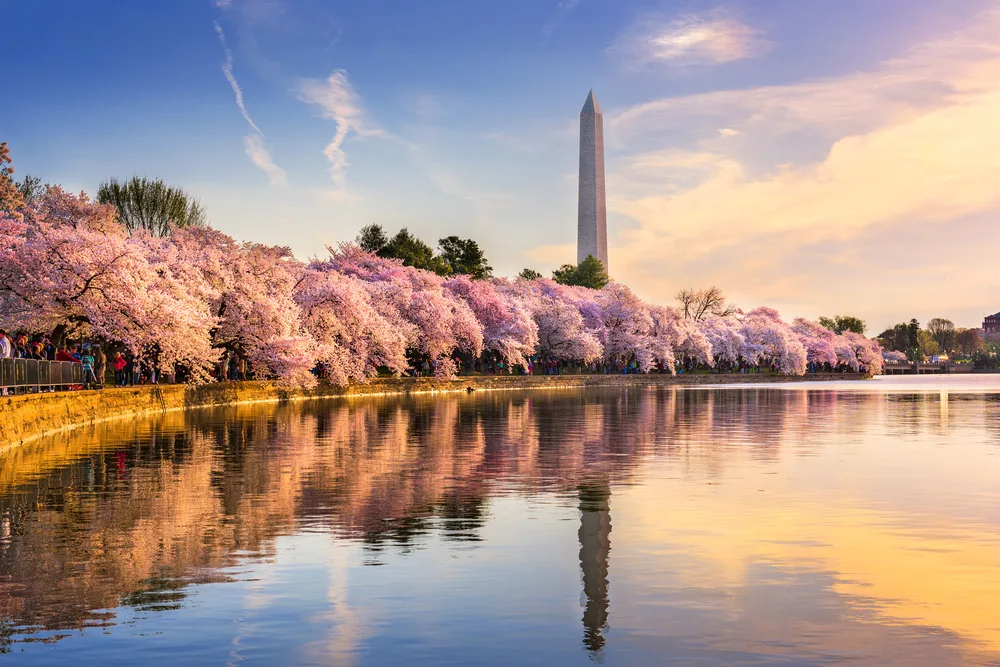
Sean Pavone/Shutterstock
Yes, Washington, D.C., is generally very safe to visit, especially if you stick to the highly-trafficked tourist areas.
Although many visitors are concerned because they hear on the news about the city’s high crime rate, most incidents of crime are highly concentrated in certain neighborhoods.
The areas around popular tourist attractions are generally free from crime and other threats to your safety. The primary concern for most visitors to Washington, D.C., particularly Americans who follow national news, is crime.
Washington, D.C., has a bit of a reputation as a crime-ridden city beneath the marble exterior of the monuments. To some extent, that reputation is based on reality. According to City-Data.com, the crime rate in Washington, D.C., is nearly twice the national average.
Common crimes that occur in Washington, D.C., are:
- Homicide
- Sexual assault
- Robbery
- Assault
- Theft
One thing to keep in mind is that Washington, D.C., is a very divided city. The neighborhoods where most locals live are usually far away from the tourist attractions. This is particularly true for neighborhoods that have higher crime rates than the national average.
The key to staying safe in Washington, D.C., is carefully researching your trip itinerary (more on that later). Besides regular crime, some people worry about terrorism before visiting Washington, D.C.
After all, it is the capital of the United States, making it an attractive target for potential terrorists. There have been incidents in the past, such as the January 6th attack on the Capitol that Congress classifies as an act of domestic terrorism.
However, law enforcement knows that Washington, D.C., makes a popular target for terrorism, and security around town, especially around sites of national significance, is very tight.
In terms of natural disasters, you don’t have much to worry about in Washington, D.C. Winters can get cold, and summers are very hot and humid, so dress appropriately for the weather (and bring bug spray in the summer).
To sum up, most tourists visit Washington, D.C., and have a great time.
While the crime rate is high, it is concentrated in specific areas and rarely affects tourists, so you shouldn’t let news reports scare you away from joining the millions of people who visit the capital of the United States annually.
Ready to Book?
Unlock Exclusive Discounts on Expedia.com!
Got Travel Insurance?
Protect yourself for unexpected interruptions.
Compare Plans We may be compensated when you book after clicking on one of our links.Crime in Washington, D.C.
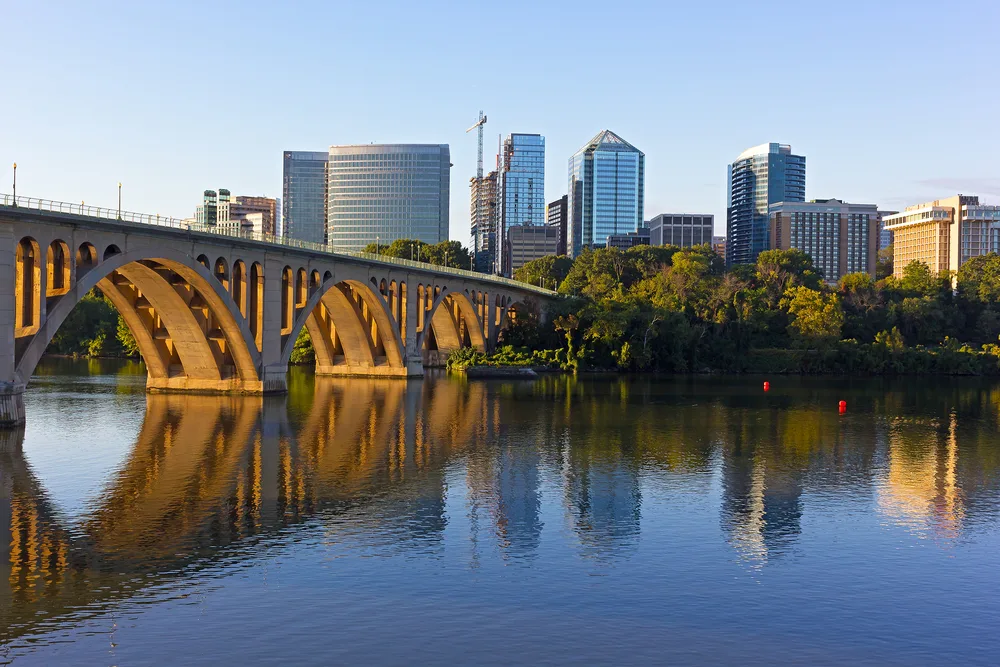
Andrei Medvedev/Shutterstock
Crime is the primary concern for people on their way to visit Washington, D.C., fueled by news stories about the criminal underbelly of the nation’s shining capital.
To some extent, the fear is true. Washington, D.C., does have a high crime rate, although sources differ on its extent (for example, US News & World Report says that the crime in Washington, D.C., is below the national average).
According to data from the D.C. city government itself, most crimes committed in Washington, D.C., are property crimes such as theft, motor vehicle theft, and burglaries.
Violent crimes make up 14.5% of the total crime rate as of 2022 data. The violent crimes that the city includes in its index include homicide, sexual abuse, assault, and robbery. Of these, the most common is robbery, at nearly 50% of the violent crime total.
Assault makes up 40% of the violent crime total, and most of the remaining 10% are homicides and sexual assault cases. Keep in mind that most of these violent crimes affect locals.
They are concentrated in areas where tourists rarely go, so your risk of being a victim of a crime is low. Plus, most cases of violent crime occur when the victim and perpetrator know each other or are at least acquaintances, making them incidents that are less likely to be random.
Plus, the safety situation in Washington, D.C., is improving greatly. According to Axios, crime decreased in 2022 compared to previous years. Violent crime decreased the most, at 7%.
The decrease was widespread across the city, with most wards reporting better crime numbers compared to the previous year. The prognosis for the city is optimistic, so don’t let scary news reports keep you away from visiting.
Pickpocketing
The most common crime tourists experience in Washington, D.C., if they experience a crime at all, is pickpocketing and other forms of petty theft. This is by no means a problem unique to D.C. but a crime that can happen in any major city or tourist destination worldwide.
Pickpockets often operate on the D.C. Metro, especially during rush hours when many people crowd the trains and it’s easier for pickpockets to operate undetected.
Besides on the train, pickpockets operate in Metro stations on the platforms and on escalators. You should also be careful when you are moving through crowds at popular tourist destinations such as the National Mall.
Pickpocketing is rare, but criminals sometimes take advantage of unsuspecting tourists to lift their valuables at these destinations. The D.C. government offers helpful tips for tourists to avoid falling victim to local pickpockets.
Be sure to keep your wallet and other valuables in a safe location, such as a zipped compartment of your bag or your front pocket. The government recommends putting a rubber band around your wallet if you keep it in your pocket so that it is harder to lift out of your pocket.
Besides pickpocketing, other forms of petty theft that happen are bag snatching, phone snatching, and vehicle break-ins.
You can avoid bag and phone snatching by keeping a firm grip on your valuables and not using your phone excessively in public. If you rent a car, make sure you don’t leave valuables in the car or at least put them out of sight.
Armed Robbery
Besides run-of-the-mill theft, Washington, D.C., is home to many instances of violent robbery, including armed robbery, muggings, and larceny.
Robbery is the most common violent crime, according to D.C. crime statistics, and the one most likely to affect tourists. Although violent crime is declining overall in Washington, D.C., robberies are increasing.
One unlucky man was actually robbed at gunpoint three times in two months, making local news. While the vast majority of D.C. residents and visitors never experience an armed robbery, especially not multiple times, the news story shows that it pays to be careful.
According to the D.C. Metropolitan Police Department, robberies occur most often in residential neighborhoods, not business districts or areas such as the National Mall, where tourists tend to congregate.
This makes sense as quiet residential side streets make it easier to isolate a victim, while only a very foolhardy robber would try to attack someone with dozens of other people, including heavily armed policemen, milling about.
If you stick to the very touristy areas of Washington, D.C., you are unlikely to see an armed robbery. If you rent accommodation in one of the residential areas or just want to explore how the locals live, you should be alert to potentially suspicious situations.
Be aware of people who look like they’re paying too much attention to you, and avoid side streets that are completely devoid of people. You can take other basic precautions to decrease your chances of getting robbed.
Don’t flash your valuables or expensive items that single you out as a potential mark. If you get lost, walk with purpose until you reach a familiar intersection or a busier street where you can safely check your phone.
Avoid using your phone in public unless you really need to — not only is the phone a tempting item for thieves, but it can also distract you and prevent you from noticing if a situation is getting hairy.
If you do get attacked, hand over your valuables and get away. You don’t want to fight back unless you are absolutely sure of your chances because you don’t want the situation to escalate into a more violent crime.
Avoiding Bad Areas
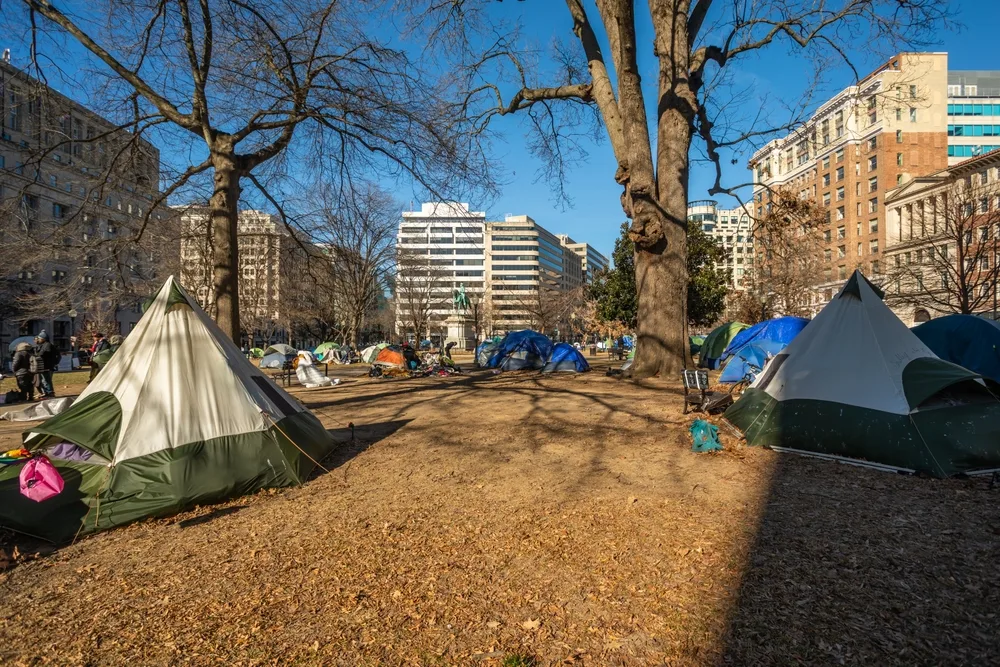
Washington, DC – 04 February 2023: Homeless Encampment on McPherson Square in Downtown Washington, D.C./Christianthiel.net/Shutterstock
The crime rate in Washington, D.C., is very lopsided — some areas are very safe, while others have a very high crime rate. This has a lot to do with the income inequality in the city — according to some metrics, D.C. is the most unequal city in the United States.
By avoiding rougher areas, you can do a lot to minimize your chances of being the victim of a crime. Most D.C. locals will tell you to avoid the SE area of Washington D.C., which is east of the Anacostia River.
The neighborhood is one of the city’s poorest and has one of the highest rates of crime. This area includes neighborhoods such as Washington Highlands, Ivy City, and Trinidad.
There aren’t a lot of tourist attractions in the area, so you probably won’t wind up here anyway. The northeast or NE quadrant of the city is also sketchy, although the crime rate isn’t as high as in SE Washington D.C.
This area includes neighborhoods such as NoMA and Brentwood. This area is more likely for you to venture into because it is close to many tourist attractions, and there are even a few hotels based in the quadrant.
Double-check your hotel booking to make sure that you are not staying in this area, just to be safe. Although the Anacostia Riverwalk Trail is a very popular tourist attraction, downtown Anacostia itself is still a bit run-down, so avoid going at night.
Frequently Asked Questions
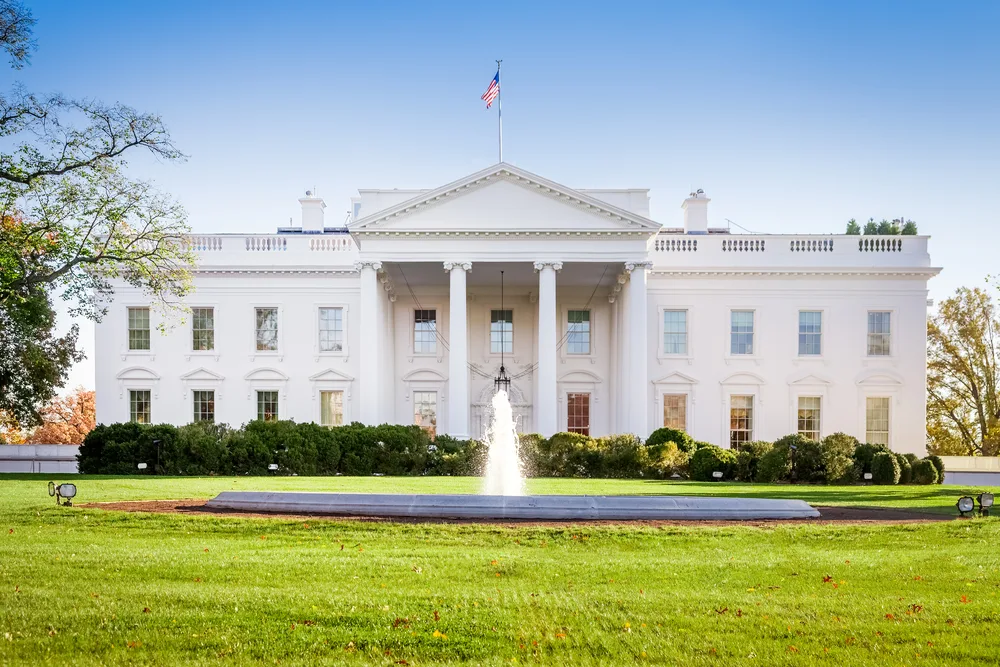
turtix/Shutterstock
Here are the most common questions people want to know about visiting D.C:
Is it safe to walk around Washington, D.C., at night?
The answer to this question depends on where in D.C. you are planning on walking around at night. The National Mall area is fairly busy even at night as many visitors want to catch the monuments when they are illuminated.
However, D.C. is not famous for its nightlife, and you probably won’t find many people out at 3 A.M. Avoid deserted areas if you want to walk around at night.
Is Washington, D.C., safer than NYC?
Most people assume that NYC is the more dangerous location due to its gritty reputation. However, Washington, D.C.’s crime rate is actually higher than NYC’s. Crime in the capital is more concentrated in certain areas, though, so less likely to affect tourists.
Is it safe to walk the National Mall at night?
The National Mall is one of the safest places to walk at night in Washington, D.C. There are usually other tourists around, and it is heavily patrolled by police officers around the clock.
What should you avoid in Washington, D.C.?
To stay safe, you should avoid sketchy areas such as Brentwood, the U Street Corridor, and Anacostia. Wherever you are, avoid drawing unnecessary attention to yourself by flashing valuables and acting visibly lost.
So, Should You Visit Washington, D.C.?
Don’t let the reports about crime scare you away. Washington, D.C., is perfectly safe to visit as long as you stick to the trodden path, and millions of people have a great time each year. So what are you waiting for — book your trip today!



